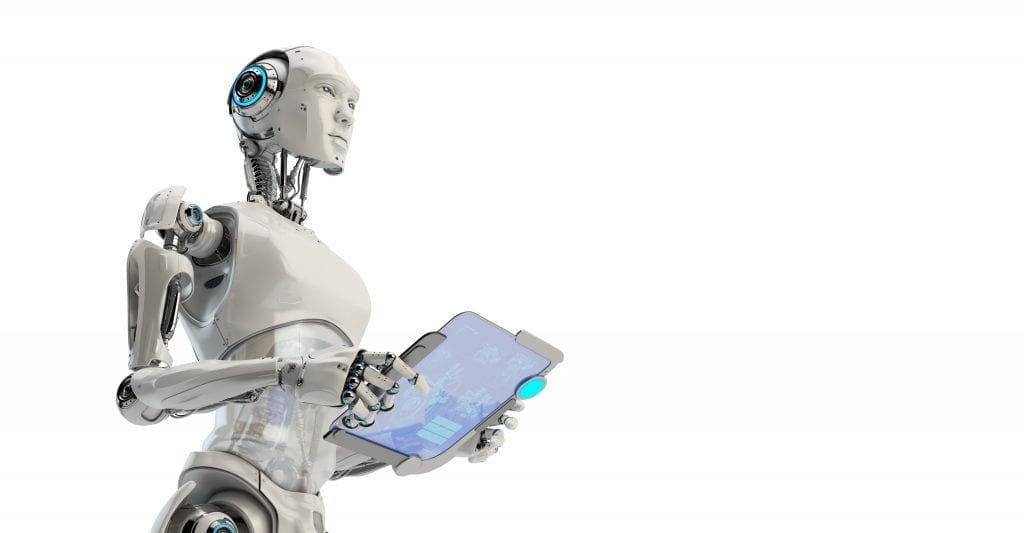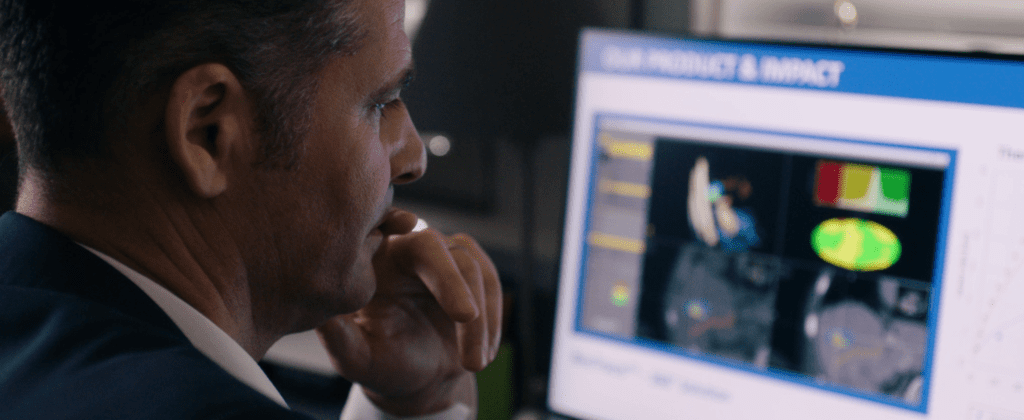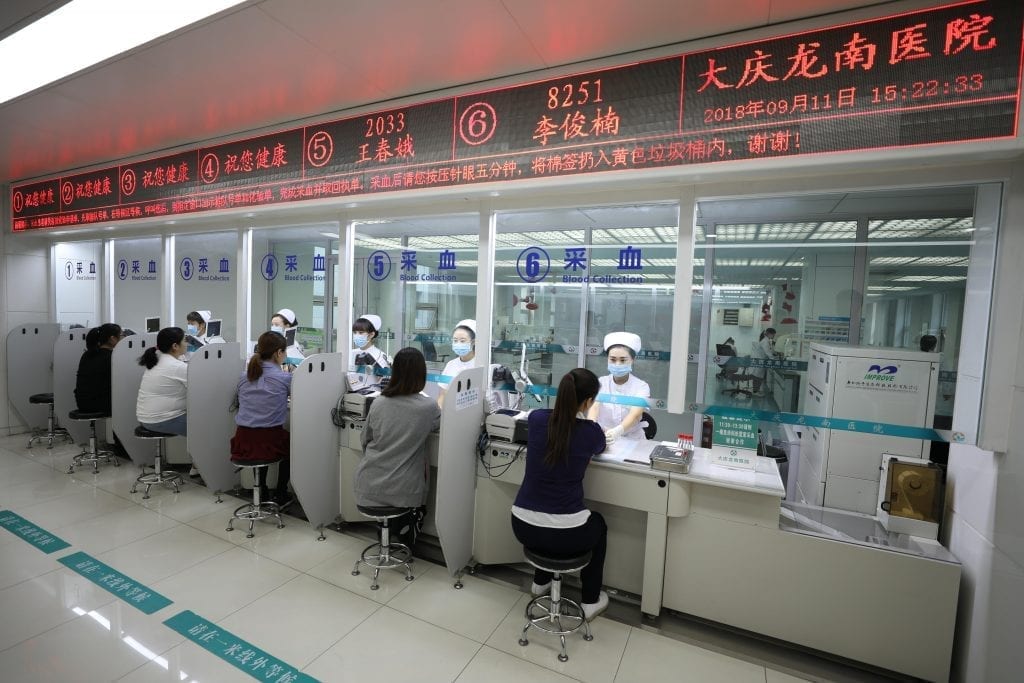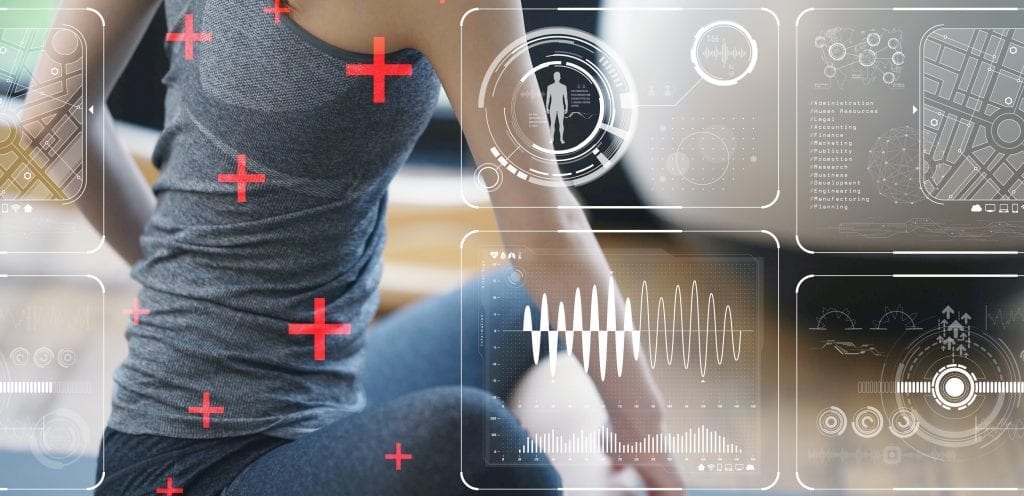Dressing one morning, as she usually does, Jane notices a strange skin discoloration on her arm. Still smaller than a dime, but she swears it used to be half that size and certainly more symmetrical. She asks her virtual assistant to scan the area and assess. A camera built into her bathroom mirror fires up, captures photos, and checks them against archival images from Jane’s entire photo library. Jane was right; something is wrong. The artificial intelligence maps the images against troves of curated diagnostic data. In seconds, the AI offers a diagnosis with 95 percent accuracy, schedules an appointment with a specialist, and asks Jane if she’d like to share the images and her recent biometrics directly with the medical practice.
Okay, we’re not quite there yet—but check back in a decade. AI is already transforming healthcare, from record management to diagnostics to patient empowerment.
Still, even the fictional scenario above includes the hand-off to doctors rather than any machine completing care. As Lenovo’s Dr. Dan Stevens put it, “Folks still want a humanizing checkpoint before any algorithmically defined diagnosis goes into action.”
The data supports Stevens, a former clinician and the global healthcare product manager at Lenovo. People consider themselves unique and are overwhelmingly unwilling to trust an algorithm to evaluate their specific needs, even if an AI has a greater record of diagnostic accuracy.
Even 10 years out, expect AI to more fully infuse suites of wearable and IoT-empowered devices, powerful diagnostic machines, and the entire healthcare infrastructure—but all in support of the work humans already do.

“Artificial intelligence supplanting the expertise, intuition, and human touch of a real physician is far off—if it ever comes to pass,” said Scott Tease, Lenovo’s executive director of High Performance Computing and Artificial Intelligence. “But AI is already part of healthcare and will continue to find new ways to seamlessly transform the patient and caregivers’ experiences.”
As we celebrate Lenovo’s 35th anniversary, our leaders are looking backwards and forwards to learn new lessons and build a future of unprecedented innovation—including in healthcare. Need a quick primer on AI before we dive in? We’ve got you covered. Curious about healthcare frontiers beyond AI? Learn about the latest in virtual reality for pain management. And check out our forecast of AI and healthcare in 2030.
Two Paths: Medical Care and Personal Wellness
Healthcare creates singular challenges and opportunities for AI. Stevens called out two distinct areas: personal wellness and medical diagnosis/treatment.
“One is about preventative care and lifestyle changes, driven by the individual and assisted by the increasing intelligence and personalization of devices,” he said. “The other will fall under the regulated and higher-stakes world of clinics and hospitals. And, of course, we will continue to see those intersect in surprising ways.”
AI will march into healthcare more slowly than other fields because it must accommodate the robust (and necessary) privacy laws in place to protect patients. Large swathes of data—the kind AI algorithms use to teach themselves—are rigorously anonymized, siloed within different systems, and colored by extreme variance in data density, quality, and structure.
Keep that in mind as we examine the current landscape and the near future. This is by no measure comprehensive—the story of tech innovation is full of unexpected twists—but offers a glimpse at a very achievable future.
AI Now: Smarter Clinics and Patient Empowerment
Already, we’re seeing Lenovo’s powerful AI innovations revolutionize tumor removal and increase access to care. As Paul Walsh, Lenovo’s Chief Digital Officer explained, “The potential for technology to transform healthcare is virtually limitless—and the world’s people are and will be better for it.”

The diagnostic transformation relies in part on the evolution of two technology segments: supercomputers and sensor devices. Walsh referenced processes that rely on cameras, which are rapidly increasing in resolution and speed. Systems run AI programs to comb through that dense data with ever-greater efficiency, pinpointing changes and flagging them for review.
“We already see this with eye cancers, for example, where older devices could only capture and analyze larger phenomena—finding more subtle disease markers couldn’t be automated,” Tease said. “That’s all changing.”
And what of the underlying algorithms and computing behind all the analysis?
“AI will be applicable to every aspect of data centers and IT infrastructure, so we’re selective on where we apply our efforts,” Tease said. “Lenovo chose healthcare as one of our key priorities. You need real depth of understanding to do this the right way, so we’re investing in experts on medicine—covering the equipment, processes, and facilities. We have powerful underlying core AI skills, and now we have partners to help us solve specific problems.”
Part of AI growth involves employing what’s called “transfer learning,” where programmers and engineers use tangential data as a starting point.
“So we can use data on, for example, liver tumors, with a huge database to then create reference points to inform other organs or pathologies with less data,” Tease said. “As the data set grows, so too will AI’s opportunities to jump into the process.”
Perhaps the least-thrilling part of this transformation—but no less essential—unfolds on the backend, overhauling the massive administrative challenges hospitals face. Processes such as insurance pre-verification are often time-consuming and riddled with errors; AI can optimize and automate these systems to save time and money without compromising quality.

More exciting is the way AI-driven pattern recognition is changing the way hospitals triage, plan resource distribution, and anticipate patient needs.
“AI can comb through patient data and predicts the patients most likely to need care within, say, the next 90 minutes,” Stevens said. “It can also tease out patterns from biometrics, flagging them for review and alerting the necessary staff. Doctors and nurses can then focus more on care where and when needed, and less on logistics.”
This is a trend of optimization—finding new efficiencies that inform patients and caregivers. So when you’re in the room with the doctor, all parties are able to ask more incisive questions and let data more readily bolster decisions.
Meanwhile, on the patient side, we’re living in the data renaissance: Everything from phones to watches to scales include sensors and IoT connectivity to create a network of detailed and personalized health data. Heart rate, weight, BMI, activity level, and even more nuanced data like VO2-max are becoming common place. Experts predict more than 250 million wearables will ship out in 2021 alone, bolstered by interconnected analysis.

“With a virtual health coach, the downside is negligible,” Tease said. “It’s nearly all upside here, with recommendations to motivate people and create customized plans to prevent health issues. AI has been welcomed into that space.”
How medical professionals will use that data—rather than trust exclusively to their own measurements—is an open and evolving question. The answer will rely as much on technology as on global healthcare regulations, which are fantastically nuanced and varied across countries.
Check out part two of this story where we jump forward five and 10 years to imagine new ways AI will revolutionize healthcare.
